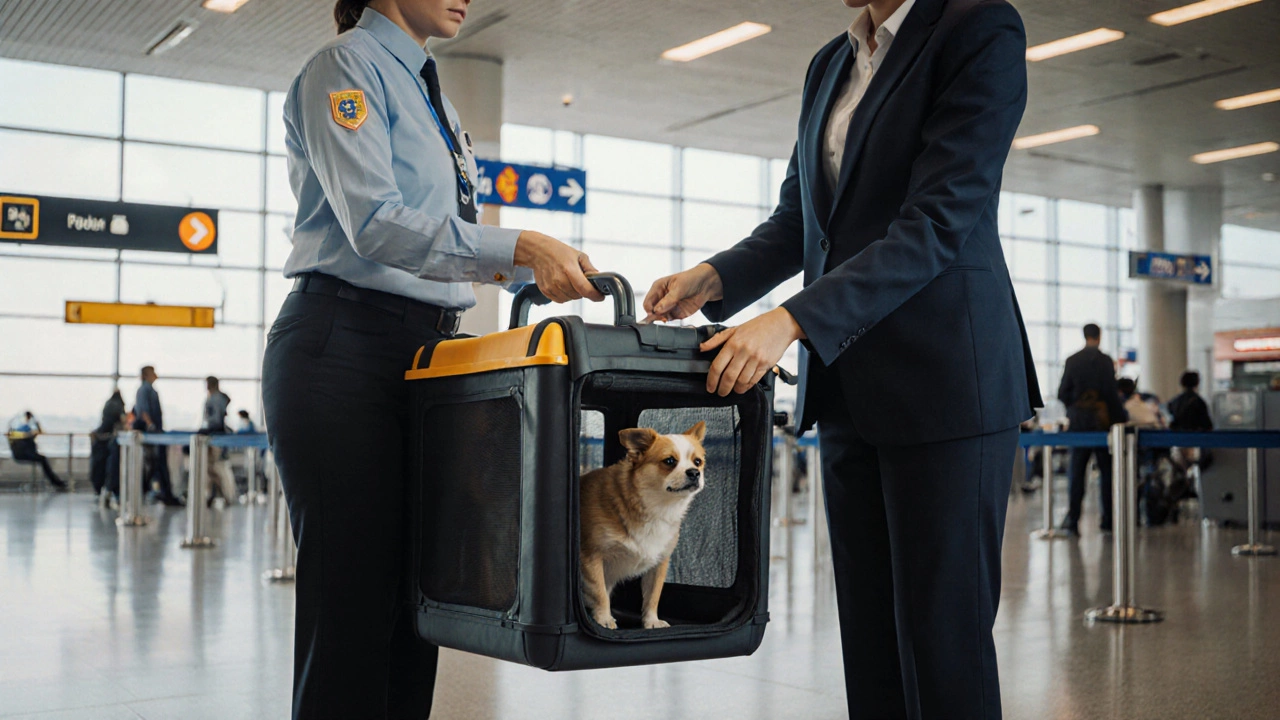Cat Carrier Airline Approved: What You Need to Know Before Flying
When you’re planning a trip with your cat, the first thing that matters isn’t the destination—it’s whether your cat carrier airline approved, a secure, well-ventilated container designed to meet airline safety standards for in-cabin or cargo pet transport. Also known as pet carrier, it’s not just a box—it’s your cat’s temporary home during travel, and airlines have strict rules about what counts as acceptable. Not all carriers labeled "travel-friendly" are actually allowed on planes. Some look sturdy but fail ventilation tests. Others fit under the seat but are too soft to protect your cat during turbulence. Airlines like Delta, United, and American don’t just check the size—they inspect the structure, latch type, and even the material thickness.
What makes a carrier truly airline approved? It needs rigid walls, a leak-proof bottom, and a secure door that won’t pop open under pressure. Most airlines require carriers to fit under the seat in front of you, so dimensions usually max out around 18 x 11 x 11 inches. Soft-sided carriers are often allowed in-cabin, but only if they’re structured enough to keep their shape. Hard-shell carriers are preferred for cargo, especially for longer flights. And don’t assume your cat’s current carrier works—many pet owners find out too late that their carrier was rejected at the gate because it had mesh windows (not allowed on some carriers) or a top-opening design (which airlines ban for safety).
It’s not just about the carrier itself. Your cat’s health, paperwork, and even the time of year matter. Airlines require up-to-date health certificates, and some won’t fly pets in extreme heat or cold. You also need to know if your flight is a direct one—connecting flights increase stress and risk. And while some people think flying in cargo is fine if the carrier is approved, studies from the American Veterinary Medical Association show that in-cabin travel is far safer for cats under 20 pounds. That’s why most vets and experienced pet travelers insist on the in-cabin option when possible.
What you’ll find below are real, practical posts that cut through the noise. We’ve pulled together guides on what carriers actually pass inspection, how to prepare your cat for the flight, what to do if your carrier gets rejected, and even how to choose between hard and soft options based on your cat’s personality. You’ll also see what airlines really say in their fine print, how to avoid hidden fees, and why some "pet-friendly" airlines are better than others. No fluff. No marketing jargon. Just what works—and what doesn’t—based on real traveler experiences and airline policies.

Do Airlines Check Pet Carrier Size? What You Need to Know Before Flying
Airlines do check pet carrier size at the gate - and getting it wrong can mean missing your flight. Learn the exact size limits, how carriers are measured, and how to avoid costly mistakes when flying with your pet in 2025.
View more